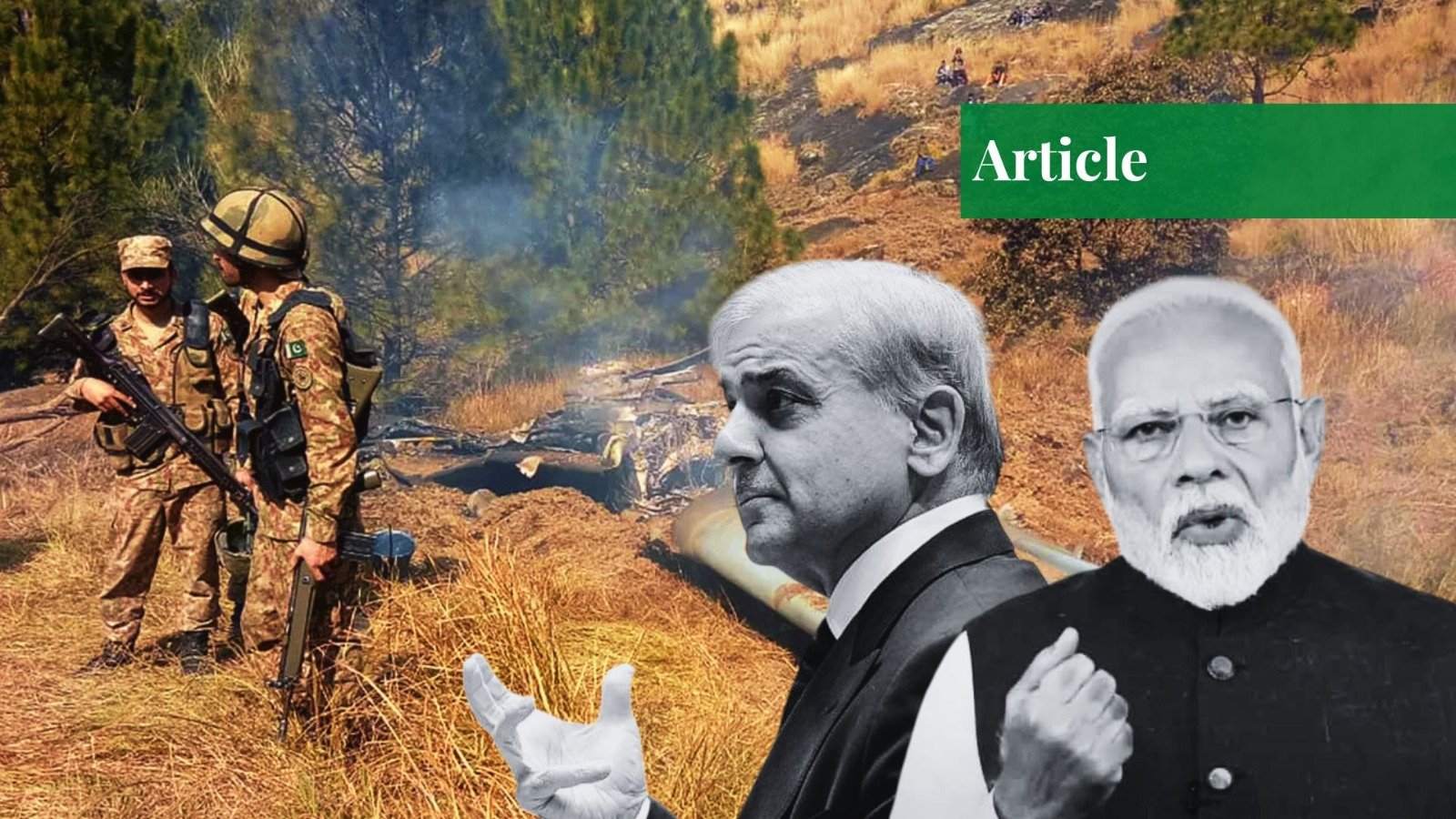Jingoism in Indian Rhetoric
India has once again embarked upon its habitual theatrics of hostility and attack, issuing grandiloquent threats of “decisive response” and ominously alluding to “Operation Sindoor 2.0” if needed. In a self-scripted event of militarized drama, New Delhi launched airstrikes on Pakistan under the pretext of so-called “Operation Sindoor” for the Pahalgam incident revenge, one of the parts of the phantom allegations’ cycle. The strikes, intended as coercive signaling, unexpectedly resulted in a strategic embarrassment for India and a symbolic victory for Pakistan. The Indian leadership and media has repeatedly used the narrative of “cross-border terrorism” via jingoism to isolate Pakistan globally while covering its own problems inside and strategic failures outside.
Indian Army Chief General Upendra Dwivedi, along with Defense Minister Rajnath Singh, has once again issued jingoistic and war-driven rhetoric against Pakistan. The Indian Defense Minister has warned that further phases of “Operation Sindoor” could come if Pakistan continues to “sponsor terrorism” inside India, familiar accusations that India uses to justify its aggression and hatred against Pakistan.
His remarks come after India faced setbacks during its military assault on Pakistan based on fabricated allegations. Meanwhile, the Indian Army Chief declared that the ongoing so-called “state-sponsored terrorism” could compel Pakistan to reconsider its map on the globe. These kinds of threatening statements reflect not only a new policy posture but also India’s old and deeply rooted war hysteria disguised as strategy.
Manufacturing Hate
These aggressive statements from India’s top military and civil leadership are not isolated outbursts; rather, they portray a large part of a larger national mindset shaped by politics, fear, and manufactured enmity towards Pakistan. New Delhi has repeatedly transformed its national identity into a theater of threat perception where Pakistan remains central. Although India portrays itself as the world’s largest democracy, in fact, its behavior contradicts the idea, exposing India’s pattern of conflict imposition, weaponized diplomacy, and militarized nationalism.
This long-standing hostility and threat perception mindset based on fabricated allegations exposes striking paradoxes: a state that preaches peace on global platforms yet promotes violence at both home and abroad. Jingoism has not only been an Indian political tool but has also become a regular practice for gaining public support and dominating the region.
This is not a “new policy direction” from India but a deeply rooted historical pattern that dates back to the post-partition era. The trauma of Pakistan’s independence from India that hurt Indian leaders and the unresolved dispute of illegally Indian-occupied Kashmir (IIOJK) fostered a lasting mistrust towards Pakistan, shaping India’s long-standing jingoistic attitude toward Pakistan. Early Indian leaders such as Jawaharlal Nehru and Sardar Vallabhbhai Patel portrayed Pakistan as a central threat to India through their consistent anti-Pakistan and anti-Muslim rhetoric. Over time, this baseless threat perception embedded in India’s national ideology is centered on hostility toward Pakistan.
The driving force behind Indian jingoism lies in the Rashtriya Swayamsevak Sangh (RSS), founded on the ideology of Hindutva and the illusion of Akhand Bharat. Indian leaders have long used ethno-religious mobilization as an electoral strategy, where Muslims living inside India and outside of India are the convenient targets for political gains. The 2002 “Gujarat Pogrom” stands as a grim example of “state-sponsored” terrorism, when Narendra Modi served as the state’s chief minister. His derogatory speeches with anti-Muslim rhetoric fueled Hindu-Muslim tensions. His remarks, “Kriya pratikriya ki chain chal rahi hai,” attempted to rationalize the violence based on “Newtonian Law.”
Under Modi’s leadership, it evolved from mere rhetoric into a state tool. Events such as the 2016 “surgical strikes” and the 2019 “Balakot incident” were glorified as symbols of Indian nationalism, aimed at fueling propaganda around the narrative of so-called “cross-border” terrorism. Television anchors chanted war-driven slogans, turning the entire media into a militarized industry by producing films like “The Surgical Strikes” and others glorifying the abrogation of articles 370 and 35(A), ultimately aimed at altering Kashmir’s demography. This fusion of militarized nationalism, weaponized diplomacy, mediatized militancy, and institutionalized jingoism makes hyper-nationalism a defining feature of the Indian domestic and foreign policy.
The Indian Reality
With the same mindset and method, following the Pahalgam incident, India hastily accused Pakistan of orchestrating so-called “cross-border terrorism” without any transparent investigation and/or concrete evidence. Based on these fabricated episodes, India launched airstrikes on the cities of Pakistan, actions to which Pakistan retaliated with utmost restraint to preserve regional peace and stability. Such reckless behavior serves India’s agenda aimed at diverting global attention from its own gravest human rights violations in illegally occupied Jammu and Kashmir (IIOJK) and other restive areas such as Nagaland, Mizoram, and Manipur etc.
While parading under the banner of “world’s largest democracy,” India simultaneously suppresses dissent and crushes emerging separatist voices. There are a number of movements, such as the People’s Liberation Army in Nagaland, the People’s Revolutionary Party of Kangleipak (PEPAK) in Manipur, and the long-standing Naxalite movement in central and eastern parts of India, currently active across Chhattisgarh, Jharkhand, Odisha, Maharashtra, Bihar, Andhra Pradesh, Telangana, and parts of Uttar Pradesh, that expose India’s internal securities.
These regions persistently suffer from underdevelopment and land exploitation, yet the Modi government is preoccupied with constructing an image of “Shining India,” where citizens are not given even their basic rights. And the Modi regime remains committed to blaming neighbors for so-called “cross-border” terrorism narratives.
Conclusion
Once again, New Delhi continues to do so, issuing similar kinds of statements that are Pakistan-centric, a repetitive pattern built on falsified threat perceptions to justify its misadventures against Pakistan. The Indian Army Chief, alongside the Indian Defense Minister, has hinted at “Operation Sindoor 2.0,” audaciously advising Pakistan to “reconsider its map on the globe.”
Such provocative statements grounded in manufactured threat and strategic deception must be dealt with by a “tit-for-tat” foreign policy from Islamabad. India’s jingoistic posture, media-driven militarism, and aggressive diplomacy have eroded regional peace and security. New Delhi, acting as a gigantic fish in the region, has crippled regional cooperation platforms, treating its peripheral states as weak.
Pakistan’s stance remains unambiguous; as reiterated on May 10, under Article 51 of the UN Charter, Pakistan reserves the right to defend its territory against any form of foreign aggression. India, instead of pursuing an aggressive policy based on contrived threats and perceptions, should adopt dialogue and mutual respect while addressing its own internal security gaps and structural failures rather than resorting to baseless accusations and threats.
Genuine peace in South Asia requires policymaking based on rationale and logic, rather than based on theatrics and pseudo-strategic posturing. India must refrain from Bollywood-style regional politics and reconsider its policy paradigm that risks the entire region in another conflict built on orchestrated threat perception.
If you want to submit your articles and/or research papers, please visit the Submissions page.
To stay updated with the latest jobs, CSS news, internships, scholarships, and current affairs articles, join our Community Forum!
The views and opinions expressed in this article/paper are the author’s own and do not necessarily reflect the editorial position of Paradigm Shift.
Sajjad Ali Memon is currently pursuing his bachelor's degree in peace and conflict studies at the National Defence University, Islamabad. He is also a daily contributor to several prestigious newspapers in Pakistan, including Dawn, The News International, The Express Tribune, and The Nation. His area of interest involves Middle Eastern geopolitics, security, and the foreign policy of the US and Russia.



